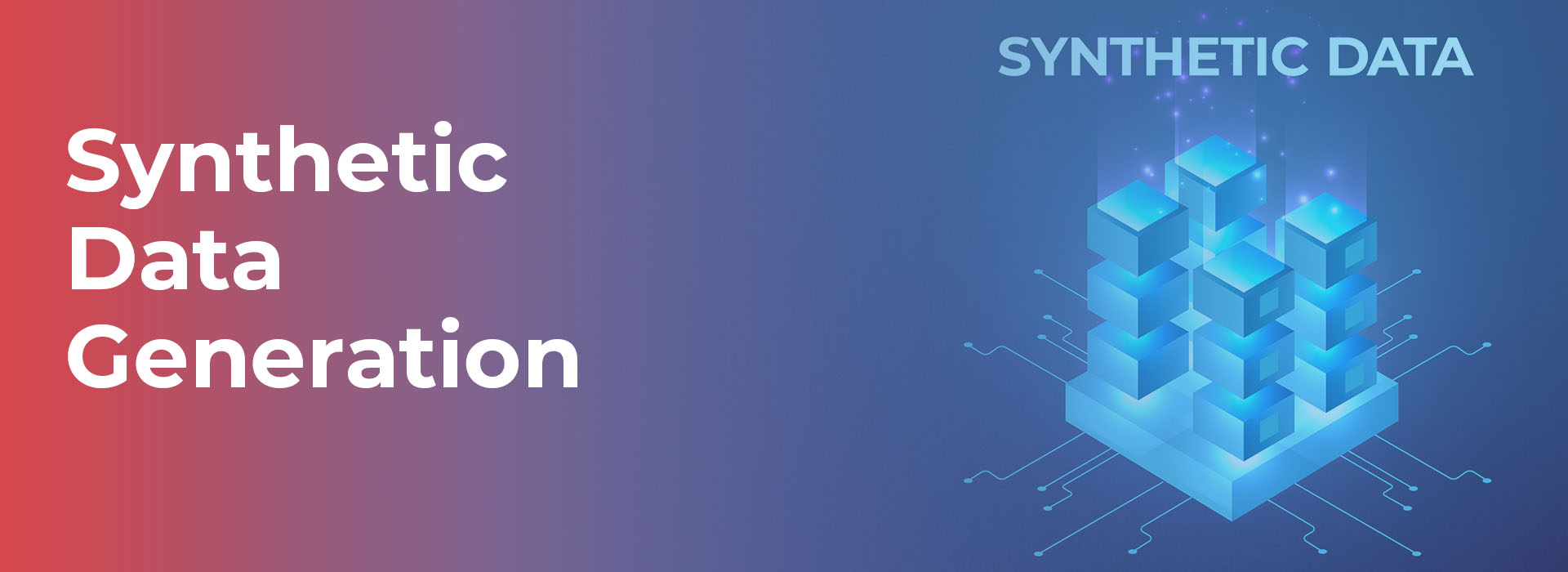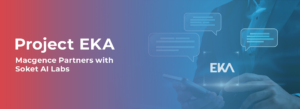Unlocking the Power of AI with Synthetic Data Generation
In the realm of artificial intelligence (AI), data alone is the linchpin that drives model training and thereby guides in the decision-making processes. However, having that said, accessing and utilizing real-world data is not an easy-peasy cakewalk. It is in fact somewhat of a daunting task. This is because such voluminous data is often accompanied by a plethora of challenges such as the privacy concerns, exorbitant costs and also, the difficulty of acquiring diverse datasets. But, well this is exactly where synthetic data generation appears on the radar and it thoroughly revolutionizes the way AI models are trained and tested.
What is Synthetic Data Generation ?
Synthetic data generation alludes to the process of creating artificial data that closely mimics real-world data.
However, unlike anonymized or masked data, synthetic data is built from zero using various algorithms and well, it does not just replicate any random real-world entity.
Furthermore, this artificial data is specifically designed in such a fashion so as to preserve the overall statistical properties of the original datasets. This therefore, makes it a valuable asset for various applications, especially in the AI and ML space.
The Crucial Role of Synthetic Data in AI :
Synthetic data AI, that refers to the use of synthetic data in AI is something that is growing at full throttle. This is essentially due to its ability to overcome the shortcomings that are widely associated with real-world data. Mentioned below is a succinct overview of some key benefits of using synthetic data in AI :
1. Enhances the Overall Privacy and Security:
Yes, you heard that right. One of the most crucial advantages of synthetic data generation is its ability to create data that is devoid of any kind of personally identifiable information (PII). This helps minimize privacy risks while also ensuring end-to-end compliance with data protection regulations like GDPR and CCPA.
2. Cost-Effective and Scalable:
Collecting and labeling large datasets is certainly a never ending, Herculean task. Also, it is obviously quite time-consuming and to add to it, we even end up burning a big hole in our pockets. However, not as synthetic data AI helps eliminate this hurdle by offering an incredible cost-effective alternative. It is now quite easy for the data scientists and engineers to generate such vast amounts of data on demand. Which is meticulously tailored for specific scenarios and therefore, there is no need for manual data collection.
3. Balanced and Bias-Free Datasets:
Real-world datasets can be biased or unbalanced. This may therefore lead to skewed model performance. However, with synthetic data generation, one can create balanced datasets that ensure fair representation of all the different variables. This is especially useful in domains like healthcare wherein biased datasets may lead to disastrous conclusions.
4. Accelerated AI Model Development:
Synthetic data speeds up the entire AI model development lifecycle. It facilitates quick experimentation and testing in simulated environments, and this in turn helps identify potential issues while optimizing the models for real-world deployment.
How is Synthetic Data Generated?
The process of synthetic data generation involves several techniques and algorithms. This primarily depends on the use case and the type of data required. Mentioned below is a brief overview of some of the most rampantly used methods.
1. Generative Adversarial Networks (GANs): GANs are a kind of deep learning model which are used to generate realistic synthetic data. GANs essentially consist of two neural networks viz a generator and a discriminator. These two work in tandem to produce high-quality data. This data is almost indistinguishable from the real-world data.
2. Variational Autoencoders (VAEs): VAEs are yet another type of neural network that are used for generating synthetic data. These VAEs work by closely studying and learning the underlying structure of the data. This is followed by creating new data points that then follow the same distribution.
3. Agent-Based Modeling (ABM): ABM per se is a simulation technique that is used to generate synthetic data for complex systems such as financial markets or social networks. It involves developing virtual agents with predefined rules and behaviors to simulate interactions and thereby produce synthetic datasets.
Future of Synthetic Data Generation
Well, as AI would continue to evolve and expand its wings, synthetic data generation would certainly come to the forefront and it shall have a critical role in ushering in innovation. The adoption of synthetic data AI would enable companies to create robust, unbiased and scalable AI models while also diminishing the ethical quandary and regulatory obstacles.
This technology is, therefore, poised to become the new heart and soul for AI research and development. It would certainly unlock doors to new possibilities and breakthroughs in fields such as autonomous vehicles, healthcare, finance, and a lot more. And besides this, it would likely transform the AI landscape by offering an efficient, ethical, and scalable solution for data scarcity and privacy concerns.
You Might Like
February 28, 2025
Project EKA – Driving the Future of AI in India
Spread the loveArtificial Intelligence (AI) has long been heralded as the driving force behind global technological revolutions. But what happens when AI isn’t tailored to the needs of its diverse users? Project EKA is answering that question in India. This groundbreaking initiative aims to redefine the AI landscape, bridging the gap between India’s cultural, linguistic, […]
March 7, 2025
What is Data Annotation? And How Can It Help Build Better AI?
Spread the loveIntroduction In the world of digitalised artificial intelligence (AI) and machine learning (ML), data is the core base of innovation. However, raw data alone is not sufficient to train accurate AI models. That’s why data annotation comes forward to resolve this. It is a fundamental process that helps machines to understand and interpret […]
March 6, 2025
Vertical AI Agents: Redefining Business Efficiency and Innovation
Spread the loveThe pace of industry activity is being altered by the evolution of AI technology. Its most recent advancement represents yet another level in Vertical AI systems. This is a cross discipline form of AI strategy that aims to improve automation in decision making and task optimization by heuristically solving all encompassing problems within […]
March 5, 2025
Use of Insurance Data Annotation Services for AI/ML Models
Spread the loveThe integration of artificial intelligence (AI) and machine learning (ML) is rapidly transforming the insurance industry. In order to build reliable AI/ML models, however, thorough data annotation is necessary. Insurance data annotation is a key step in enabling automated systems to read complex insurance documents, identify fraud, and optimize claim processing. If you […]


 Previous Blog
Previous Blog







